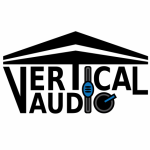Academy Dashboard › Forum › Production › Mixing › Analog Summing
- This topic has 22 replies, 4 voices, and was last updated 8 years ago by
 tblizz.
tblizz.
-
AuthorPosts
-
April 20, 2016 at 12:45 pm #8000
 Jared ShermanParticipant
Jared ShermanParticipantBut which did you like better? Or even better, can you do a level matched blind test and see which you prefer?
April 20, 2016 at 1:46 pm #8009 tblizzParticipant
tblizzParticipantJared, for this laidback, organic, acoustic track I prefer the Analog summing. I did (peak) level-match all 3 tracks and solo-ed them during the song. The differences between HEAT and Analog are bigger then they are between Digital and Analog. On my Fostex T50RP Planar headphones you can really hear the sound-image move to the front on the HEAT summing. This combined with a more pronounced high & low-end, I imagine it would work really well on a modern rock mix.
April 20, 2016 at 2:47 pm #8020 Steve AParticipant
Steve AParticipantThat's kind of what I thought while listening as well, Martijn.
My supposition that the analog summed track is diametrically opposed to an 'exiting' digital one, is also correct, at least to my way of thinking...
I've got all the tracks, and will still try to re-create the analog sound with my assorted plugins, probably over the weekend..
Could you guys kindly leave the mixed tracks up on dropbox for future reference? That'd be great, (if not, I will host on mine).
Thanks Jared for putting this through HEAT and posting the mix, and thanks for this whole thread, tblizz! Very cool!
End of geeky rant..haha..April 20, 2016 at 4:41 pm #8027 Jared ShermanParticipant
Jared ShermanParticipantWell I did actually max out the Drive knob, which I never do in practice. I was trying to make the effect dramatic for comparison's sake.
April 22, 2016 at 7:49 am #8173 Steve AParticipant
Steve AParticipantQuick question; Do you know if the place that summed this made any level changes to individual tracks or not?
ThanksApril 22, 2016 at 10:05 am #8178 tblizzParticipant
tblizzParticipant@Steve looking at The Summing Station's website gear-list, any individual level changes shouldn't be possible. However, the transformers are probably more effective on certain part of the frequency spectrum, so that may play a role in what you're hearing.
Mixing into the B32 Vancouver, like Greg Wurth, is a luxury I don't have... but I'll take the next best thing! 🙂April 22, 2016 at 4:08 pm #8214 Warren HuartKeymaster
Warren HuartKeymasterHi guys, my 2 cents worth is this. The last great generation of consoles were wonderful because you ran your beautifully fat sounding tracks into the line amps which contained transformers, op amps etc and then the fader was post the line amps. This meant that you got the best out of your line amps of your console. Now with summing amps you aren't going to get this benefit as you are doing volume automation before the line amps, you're not getting that fat signal consistently going into them. So record fat tones, concentrate on the front end, that is going to be your biggest increase in quality! With Andrew Scheps way of mixing in-the-box you will have busses that have plug ins that fatten the sound and faders post plug ins. Have a marvellous time recording and mixing, many thanks Warren
April 23, 2016 at 10:49 am #8255 Steve AParticipant
Steve AParticipantFirst off, thanks for your insight and take on things, Warren. Very interesting.
OK, I knew I wouldn't be able to replicate exactly what the transformers in the BURL were doing, or the rest of the gear that they use for that matter, but it sure was fun trying. When they state that they don't touch the EQ's settings, I find that hard to believe, but anyway...
Here's the file, and I hope you enjoyed this fun little experiment as well:
http://www.dropbox.com/s/778tu414jeg0mwe/Pin%20a%20Rose%20Matched_Pin%20II%20Bus.wav?dl=0Oops.. Forgot to list what I used.
Slate VMB on the RC Tube console setting, and UAD Fairchild (barely) for 2nd order harmonics.
Slate VTM for the 3rd order harmonics.
Slate Revival thickness set at 3.5, and Waves REQ to put back what the analog plugs pulled out.I think I got 'close' ...but would like to know if you thought so too.. 🙂
April 24, 2016 at 1:16 pm #8308 tblizzParticipant
tblizzParticipantSteve, thank you for uploading your Summing Mix version. After matching the peak-levels, these are my first impressions:
- also a good sounding mix that certainly has that vintage feel.
- it sounds louder and more compressed than the analog summing mix, making it sound more forward. In particular the low end, kick & bass, are more pronounced. This seems to create a sort of tilt-EQ-effect with more low-end and slightly less high-end.
- however this doesn’t seem to affect the vocals intelligibility, which makes me believe that this high-mid frequency range is boosted as well.Here's the HoRNet ELM128 meter for your mix:
Steve SummingApril 25, 2016 at 4:45 pm #8404 Steve AParticipant
Steve AParticipantThat 'tilt' EQ is mostly the 'thickness' setting on Slate's Revival plugin, I should have just used the regular EQ, as Revivals setting is quite broad, picking up too much of the bass.
Yes, the highs around 8k were boosted because using an analyzer on your mix next to mine in PT, that frequency definitely was lacking, so I just matched it. That's why I said I find it hard to believe they leave settings flat on the EQ in their chain, matter of fact, I'd be willing to bet they don't...
So was it close enough? ..or would you spend the $180 on a 10 song LP? Just wondering..Also, I've been thinking on what Warren said about all of this, and it makes sense to a degree. Yes, you wouldn't have a consistent sound using a summing box, but I don't think it would be that far out of whack. I think your analog summed mix speaks to that.
*However* Don't get me wrong, I'm in total agreement with Warren's main point, that the front end gear is going to make the biggest difference in getting killer fat tracks to your DAW.Wanna read something completely different about all this though?
I was doing a search about how automation would effect a summing box and came upon this thread in another forum..
I have never heard about doing what they are talking about...talk about eye-opening!
Check this out, and read posts 3, 8, and 11 in particular, I'm going to try this, and see if what they claim is true.
Here's the thread: http://recording.org/threads/itb-vs-passive-summing-otb.57805/April 26, 2016 at 12:19 am #8417 tblizzParticipant
tblizzParticipantSteve, thank you for the link. I don’t see how an extra DA -> AD conversion would help the quality, but hey, if it works for them who am I to argue. If summing isn’t controversial enough you might as well add clocking into the mix! 😉
The $10,000 chain the Summing Station uses, makes sense to me. If the 1 minute try-out makes a difference, I’d be happy to pay 2% of that amount for a whole album. Like I said in my previous posts, analog summing is just 1 technique in a whole list of things you can do to get a more analog sound. Also after the tests we did with plug-ins, it indicates that it's not something that can be easily replicated ITB.
The April issue of Sound on Sound has an interesting test of the new Dangerous Music 2-Bus+. It says: “The debate over the potential benefits of analogue summing still rages, but the number of different summing boxes on the market shows that there’s plenty of interest in it [for the last 15 years]”. The 2-Bus + also shows how you can build on the concept of analog summing by adding (parallel) processing to the mix.Warren was also interested in the Black Box HG-2 Bob Horn uses on his 2-buss. The overlap with Mastering is becoming apparent, but as the industry is moving towards that anyway, it starts to make sense to look into the possibilities.
-
AuthorPosts
- You must be logged in to reply to this topic.

